Do you find yourself faced with an aged or worn-out floor? Perhaps you’re feeling overwhelmed by the daunting task of choosing the perfect flooring for your new home?
Revamping or selecting flooring can be a daunting endeavor, but there’s no need to worry. With the multitude of flooring options available today, you can easily find something that matches your needs and preferences without any trouble.
However, it’s crucial to remember that not all types of flooring are equal. What may work well in one house may not be the ideal choice for another. When making a decision, factors such as materials, environment, household requirements, and budget should all be carefully considered.
To assist you in your research, this guide provides valuable insights into the advantages and disadvantages of the ten most popular flooring types. By taking these factors into consideration and exploring your options, you can confidently choose a flooring solution that brings both beauty and functionality to your space, lasting for years to come.
Hardwood
Hardwood flooring is a highly favored choice for floors, particularly in the United States. It is composed of genuine, solid wood and is typically affixed to the subfloor by nailing it down.
Hardwood flooring comes in two common variations: strips, which are usually up to 2.5 inches wide, and planks, which can reach widths of up to 4 inches. It is crafted from various types of wood, such as cherry, oak, walnut, and maple.
When purchasing hardwood flooring, it is advisable to select products from companies with FSC or SFI certification. This ensures that the wood used is sourced sustainably and adheres to legal practices.
Hardwood flooring can be acquired either pre-finished or unfinished. Opting for unfinished flooring allows for sanding and finishing after installation, which can be a more cost-effective choice. On the other hand, pre-finished flooring tends to be more durable as it undergoes finishing by the manufacturer.
Advantages
Undeniably, hardwood flooring is highly sought-after due to its versatility and captivating beauty. Its natural, warm appearance complements various rooms in a home and imparts a sense of visual elegance to any area.
Beyond its aesthetic appeal, hardwood flooring is renowned for its easy maintenance. Cleaning and mopping are effortless tasks, resulting in a gleaming surface that is visually pleasing.
Disadvantages
While hardwood flooring boasts numerous benefits, it also has a few drawbacks to consider. For instance, hardwood is sensitive to fluctuations in temperature and humidity, which can cause it to contract and alter its original appearance.
Moreover, hardwood is susceptible to scratches and dents, leaving noticeable marks on its surface. Consequently, it may not be the ideal choice for high-traffic areas or households with active children or pets.
Lastly, hardwood flooring is not recommended for rooms exposed to frequent moisture, such as bathrooms or kitchens. Prolonged water exposure can lead to warping, rotting, and damage to the wood over time.
Bamboo
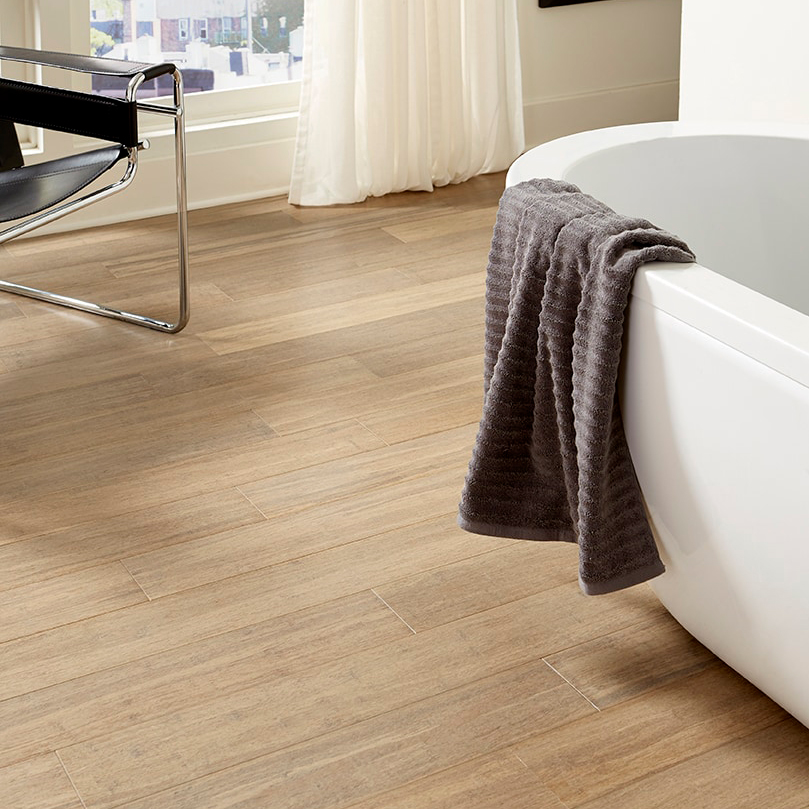
Bamboo has emerged as a popular substitute for hardwood flooring due to its comparable appearance and texture. Nonetheless, there are discernible distinctions in the grainy aspect of bamboo grass, varying according to the specific bamboo species employed.
Advantages
A notable advantage of bamboo flooring is its rapid growth in comparison to hardwood trees like oak, maple, or cherry. This characteristic renders bamboo a more environmentally-friendly choice, as it can be sustainably grown and harvested without disrupting ecological balance.
Disadvantages
However, there are also drawbacks associated with bamboo flooring. The manufacturing process involves compressing bamboo with adhesive, and some manufacturers may employ hazardous levels of formaldehyde during this procedure. Additionally, the mass production of bamboo flooring can result in excessive pesticide usage in bamboo cultivation, posing potential harm to the environment.
Engineered Wood
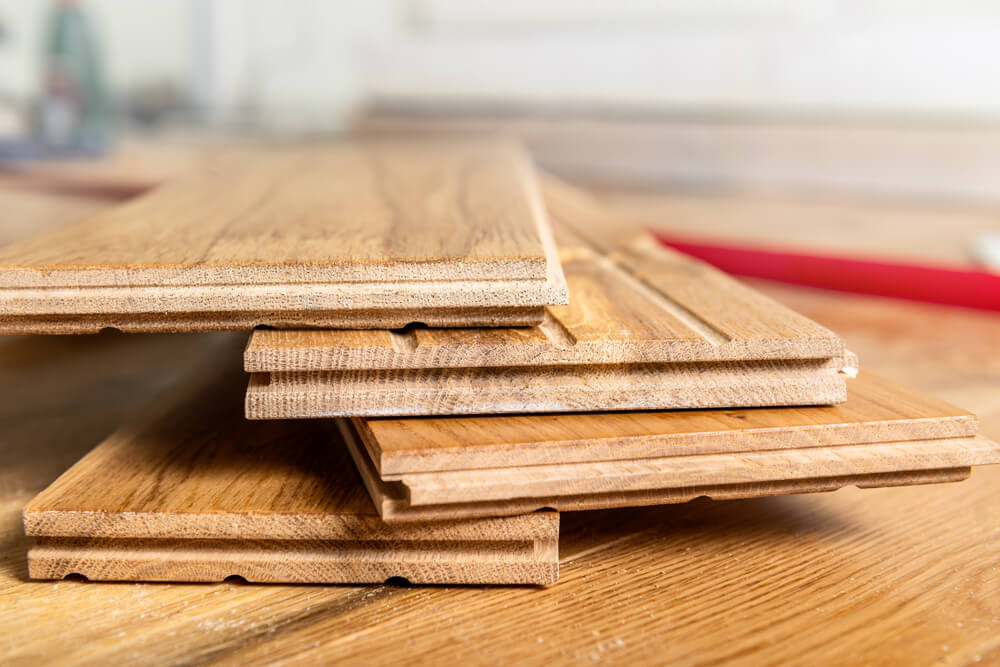
Engineered wood flooring presents a cost-effective alternative to solid hardwood flooring. It features a real wood veneer layered on top of a thinner plywood base, offering affordability and enhanced versatility.
A key advantage of engineered wood flooring lies in its resistance to temperature fluctuations, making it suitable for installations in areas like basements where solid wood may not be as suitable. Its installation is also straightforward, utilizing a tongue and groove system, allowing for flexible floating or glued installations.
However, similar to solid wood flooring, engineered wood is susceptible to scratches and dents. Additionally, it can only be refinished a limited number of times before wearing down the top wood veneer, potentially diminishing its long-term durability.
Despite these limitations, engineered wood flooring remains a favored choice for homeowners seeking the aesthetic appeal and texture of hardwood flooring at a more affordable price point.
Ceramic or Porcelain Tile

Ceramic and porcelain tile flooring are highly favored choices known for their durability and versatility. Ceramic tiles are crafted from clay and shale, offering a wide array of materials, sizes, and patterns. Glazed options provide a glossy appearance, adding to their aesthetic appeal.
Porcelain tiles, on the other hand, surpass ceramic in durability and are suitable for outdoor applications. Unglazed options like quarry and terracotta tiles offer a less slippery surface and a more natural look.
A significant advantage of ceramic and porcelain tile flooring is their low maintenance requirements compared to other flooring types. They are easy to clean and come in an extensive range of colors and patterns, catering to various home styles.
Nevertheless, there are also certain considerations to keep in mind. Ceramic tiles can stain if not regularly sealed, and glazed tiles may pose slipperiness concerns when utilized in bathrooms or kitchens. Moreover, repairing or replacing cracked or broken tiles, particularly the sturdier porcelain options, can be challenging.
Laminate
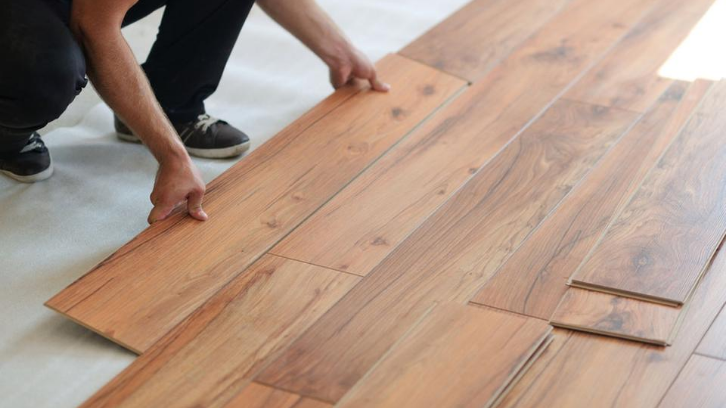
Laminate flooring is a contemporary flooring choice that closely mimics the appearance of hardwood flooring, despite not being made from real wood. Its top layer consists of a thin plastic veneer with printed patterns, while the underlying layers are composed of plywood.
One of the primary advantages of laminate flooring lies in its easy maintenance and scratch resistance, offering a durable and cost-effective option. It also showcases eco-friendliness as it can be manufactured using recycled stone dust instead of rare trees.
Laminate flooring is known for its straightforward installation process, requiring no glue or nails, thereby reducing installation costs.
However, a drawback of laminate flooring is that it lacks long-term repair or refinishing options. Once it becomes worn out, replacement is the only solution. Furthermore, prolonged exposure to water can result in moisture absorption, leading to warping or damage to the plywood layers underneath, necessitating replacement.
Vinyl
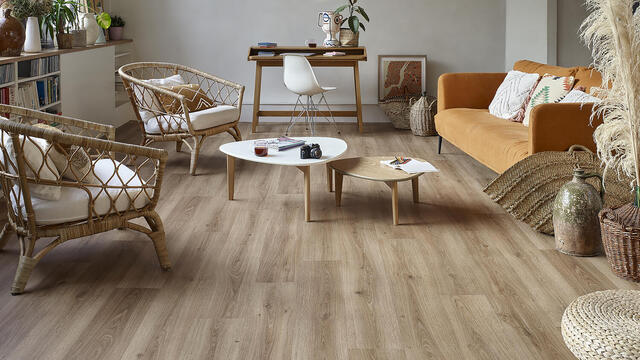
Vinyl flooring has gained popularity for its remarkable durability and water-resistant properties. Composed of Polyvinyl Chloride (PVC), it can be enhanced with a layer of foam for added comfort.
Available in sheets or planks, vinyl flooring offers convenient installation options, with planks often featuring click or sticker mechanisms. It can be customized to emulate the warm and inviting look of wood or stone.
A significant advantage of vinyl flooring lies in its water resistance and long lifespan, lasting up to 20 years. Moreover, if individual planks or tiles become damaged, they can be easily replaced, saving on replacement costs.
However, there are certain drawbacks to consider. Vinyl is derived from PVC, a material that sparks controversy due to potential environmental and health concerns. Additionally, assessing the quality of vinyl flooring can be challenging, as many designs closely resemble real wood or stone, making it difficult to differentiate between higher and lower quality products.
Linoleum
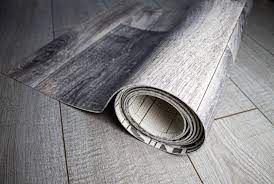
Linoleum flooring, an older flooring style, is crafted from natural resources such as linseed oil, wood flour, and pigments. It is available in sheet and plank forms and can feature a protective coating to prevent stains.
The durability and eco-friendliness of linoleum flooring stand as its main advantages. It can withstand heavy foot traffic and moisture, rendering it suitable for high-traffic areas like kitchens. Linoleum is also biodegradable, recyclable, and does not harm the environment.
Cleaning linoleum flooring is effortless, and with proper maintenance, it can endure for up to 40 years. However, caution must be exercised to avoid sharp objects that can compromise its water-resistant qualities and expedite wear and tear. Furthermore, exposure to UV rays or sunlight should be avoided, as it can lead to fading and staining.
Cork
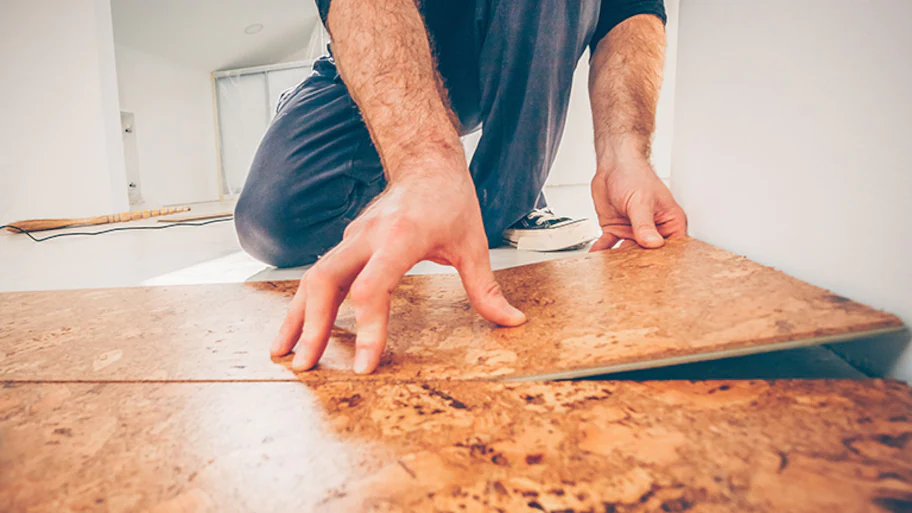
Cork flooring has gained significant popularity as a resilient flooring choice, crafted by compressing tree bark. The corkboard base is adorned with a veneer that mimics the natural appearance of cork tree bark.
One of the primary benefits of cork flooring lies in its sustainability. It is harvested every 8 to 10 years without causing harm to the tree, making it an environmentally friendly option. Additionally, cork flooring boasts slip-resistant properties and a naturally glossy aesthetic.
However, it is essential to note that cork flooring is sensitive to moisture and necessitates regular sealing with wax or polyurethane to protect against potential damage and staining.
Carpet
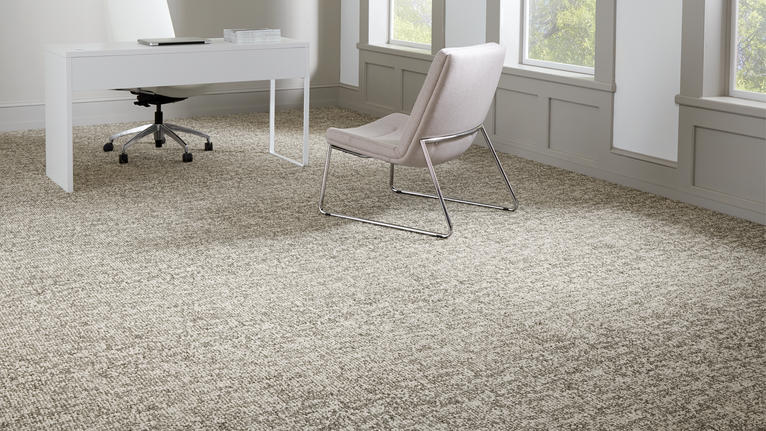
Carpet flooring is a popular flooring choice characterized by its use of delicate fibers like wool, nylon, acrylic, polyester, and polypropylene. It offers a soft and comfortable surface, making it well-suited for bedrooms and living rooms.
A significant advantage of carpet flooring lies in its plush and cozy texture, providing both slip resistance and durability. However, it is important to note that carpet flooring can be challenging to clean and has a tendency to trap dirt, microorganisms, and allergens. This can potentially trigger allergies in susceptible individuals. Regular and thorough cleaning is necessary to prevent the buildup of unpleasant odors caused by sweat and moisture.
Natural Stone
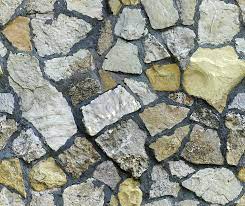
Opting for natural stone flooring is an excellent means of introducing a rustic touch to your home decor. The abstract patterns and organic hues found in stone make it an ideal choice for both indoor and outdoor settings, provided it is properly maintained.
Natural stone tiles are available in a range of sizes, offering a multitude of options to suit your preferences. Many individuals choose natural stone flooring for its inherent beauty and ability to create a refreshing, natural ambiance in any room.
One of the significant advantages of natural stone flooring is its durability. Being composed of solid rock, it can withstand moisture, scratches, and the impact of sharp objects. Walking on a polished stone surface feels splendid and contributes to reducing allergens and dust within your home.
Furthermore, natural stone flooring has the potential to enhance the value of your property should you decide to sell in the future. Each stone tile possesses its own unique shape and pattern, imparting a distinct and exquisite appearance to your home.
However, it is worth noting that the installation process for natural stone tiles can be challenging, often requiring the expertise of a professional contractor. Additionally, the cost of stone tiles is relatively higher compared to other flooring options.
Things to Consider When Choosing Flooring
When it comes to choosing flooring options, there are several key factors that need to be considered. First and foremost, it’s important to assess the specific room and determine which type of flooring is most suitable. Not all flooring types work well in every room, so careful consideration is necessary.
Secondly, the overall style and aesthetic of your house should be taken into account when selecting a flooring type. Certain options may complement the desired ambiance better than others, so finding the right fit is essential.
Budget is another crucial factor to consider. The cost of flooring options can vary significantly, often correlating with the quality of the materials. It’s important to determine what type of flooring is affordable and will provide long-lasting durability.
The family situation should also be considered. For households with young children or pets, spill-proof and scratch-resistant flooring options are necessary to withstand the demands of an active lifestyle.
Additionally, the installation requirements of different flooring types should be taken into consideration. Some options may require professional installation, while others can be easily installed as a DIY project. This aspect should align with both the budget and capabilities of the homeowner.
Lastly, the flooring choice can have a significant impact on the value of the house. Higher-quality and higher-cost flooring options often result in a better long-term investment. It’s important to evaluate the potential return on investment when making a decision.
Taking into account these considerations, here are our recommendations for different rooms:
Bedroom: Carpet flooring is a popular choice due to its soft and comfortable feel, creating a cozy atmosphere. However, wood, laminate, or vinyl flooring options are also suitable and preferred by some individuals.
Kitchen: Vinyl flooring is an excellent option for its waterproof properties and easy maintenance, making it ideal for areas prone to spills and stains. Tiles and laminate flooring are also suitable choices for their durability and ability to withstand heavy foot traffic.
Living Room: The living room requires a flooring material that is both functional and aesthetically pleasing. All flooring types can be suitable for the entryway, depending on style preferences and practical needs, such as durability, ease of cleaning, and slip resistance.
Stairs/Landings: Stairs typically experience high foot traffic, so flooring should provide safety, durability, and minimize noise. Carpeting is often preferred for its noise-reducing properties and cushioned feel. Hardwood, laminate, or vinyl are also suitable options.
Bathrooms: Water-resistant and low-maintenance flooring materials are crucial for rooms with moisture. Vinyl, natural stone, and porcelain tiles are ideal choices due to their water resistance and durability. Slip-resistant vinyl flooring is particularly suitable for wet areas.
Rooms with Pets: Flooring in rooms where pets are present should be durable, water-resistant, and capable of withstanding scratches. Vinyl and laminate flooring are excellent options, as they are scratch-resistant and easy to clean.
By considering these factors and room-specific recommendations, you can make an informed decision when selecting flooring for each area of your home.
